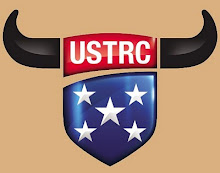Pushing the Barrier by Speed Williams – August 2015
Heading Loops that Catch
Lately the headers coming to my place have had questions about where to swing their loop, at what angle, and where their tip should point. A lot of headers watch reachers rope and see them swinging their rope with the tip pointed two or three feet over the horns. This works, in this case, because the combination of distance and gravity allows the loop to reach the target. This particular swing does not work well when running close.
I want to talk about running close and being able to catch every cow. This is totally different than reaching. I’m talking about riding your horse to the cow, swinging your rope and being able to deliver your rope right out of your swing. When doing this, if you swing over top of the horns and come across the horns, without changing the angle of your swing to throw, your odds of catching increase dramatically.
It just doesn’t make sense to swing three feet above your target and at the last minute, throw it down. Your odds of success when doing this are not very good.
When playing pool, advanced players use “English” to get control of the cue ball. In roping, when you swing below the horns and then raise your rope to throw it, there will be a lot of action on your rope. The problem is if you don’t have a lot of control, you will often split the horns.
Being able to catch every cow is especially handy when you’re high team. Your heart is pounding and all you have to do is catch. That’s when it’s crucial to ride to position and come out of your swing and rope the horns. Many people struggle with this because they think they need to have action on their rope, but roping out of your swing is much more consistent. Once you can catch every cow, then you can be concerned with action. Like in pool, you first have to learn to make the shot before worrying about putting English on the cue ball.
On speedroping.com there are some videos where I discuss in detail swinging left to right versus roping both horns at the same time. If you’re only willing to learn to rope one way, then you will be unable to overcome the obstacles that invariably come during competition. I’ve seen this in high numbered headers who love to reach. When all they have to do is catch, they miss and split the horns because they didn’t learn to run close and catch. If you miss your high team steer, your partner will not be happy.
What’s new with me: Lately I’ve been riding a horse that was trained as a Reiner. As such he’s got some bad habits in the roping pen I’ve been working on. He tends to run with his nose inside, won’t lock on the cow, and stops with his head down. However, he’s very broke and has a lot of buttons. We have some videos of me riding him and looking like a monkey riding a border collie.
My kids are in the middle of baseball and softball. Hali was picked up by the first place team and they are headed to state. Gabe and his team are undefeated this year and headed to district. We’ve been having baseball and softball camp every morning. We film the kids and then have them watch themselves on video. I hired a sixteen-year-old softball player so I could film her and have our girls watch their film and hers simultaneously. It’s very much like roping where little things make a big difference.
Monday, August 10, 2015
Pushing the Barrier By Speed Williams August 2015 Heading Loops that Catch
Subscribe to:
Post Comments (Atom)


























No comments:
Post a Comment